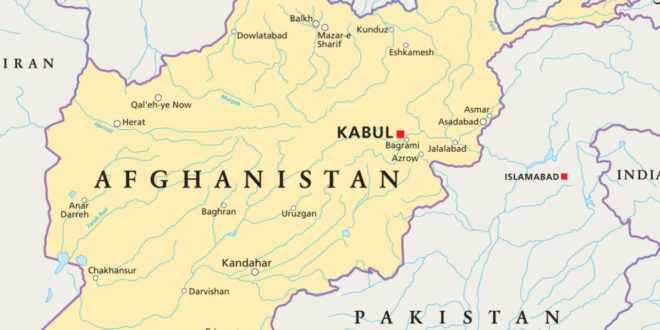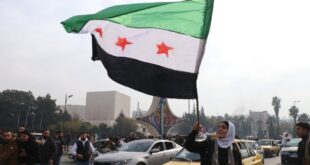Sajad Abedi
Considering the weapons and skills of the Central Asian armies that have weapons and skills of the former Soviet Union, the forces of these countries are likely to face more severe insurgent resistance. It should be kept in mind that they cannot provoke all people. At no point in the past twelve years, Central Asian countries have not been willing to join a multi-national force and have not shown interest in it. Also, the strong combination of Central Asian armies in Afghanistan would be unpleasant. For example, speculation is that the Tajik army will be deployed to Tajikistan in Afghanistan. The same will be the case with the Uzbek and Turkmen forces. In this case, they will receive a brutal response from the Taliban. In fact, the Taliban will provoke Pashtun nationalism against forces from Central Asian countries to break up Afghanistan (from the Taliban’s perspective). Pashtuns do not turn their attention to this and will target Tajiks, Uzbeks and Turkmens of Afghanistan. In such a scenario, Afghanistan easily falls into a full-blown civil war.
Other countries in the region that are likely to send troops to Afghanistan include Saudi Arabia, UAE and Egypt from the Middle East. Since people in these countries are involved with the Afghan insurgency, it is very unlikely that these countries will join the security force of several regional nationalities in Afghanistan. Middle East countries do not want to bet on deploying troops in Afghanistan. It can be very unpleasant to fight with insurgents that are being used by them in these countries, especially when these countries have not yet gone through the Arab Spring.
It is clear from the information that terrorist groups and their supporters have made a determination to horrify in Afghanistan in the coming year. The Taliban’s neglect of the Afghan government’s peace plan clearly shows that the Taliban have focused their attention on the war with the government in Afghanistan. The process of electing the National Assembly and the district councils is as important as the legitimacy of the government of Afghanistan, the failure of this process is also important for the Taliban and terrorist groups in Afghanistan. In addition, developments in the region and international affairs, such as the withdrawal from the United States of America of the program of action with Iran and the defeat of ISIL in the Middle East, have had a significant impact on increasing insecurity in Afghanistan.
The ISIL group has carried out the most deadly attacks in Afghanistan this year, and has been able to focus more attention on analysts and news outlets. But what is most worrying is that this group has turned to the massacre of a particular social group in Afghanistan to flame up the fire of sectarian strife in Afghanistan, which, if not blocked by the government, has further concerns will create. The ISIS group launched this year in Afghanistan with a deadly explosion in the Shiite section of western Kabul, killing about 69 dead and 120 wounded. The incident took place at a polling station for the upcoming parliamentary elections in the Shiite neighborhood of Kabul, which was held by ISIL.
The ISIL suicide attacks against the religious and cultural sites of the Shiites of Afghanistan are now one of the major problems and challenges of the national unity government in the security sector of this people, which has so far failed to succeed and failed. Since its inception in Afghanistan, ISIL has been the most deadly attack on its Shiite population. Following the bloodiest suicide attacks in the demonstration on the Dehmzang square, Baqer al-olum and Al-Zahra Mosque, the most bloody suicide attack took place in the mosque during the winter of last year, resulting in the martyrdom of 40 worshipers and the wounding of 90 people. Following the bitter incident, another suicide bomber struck Imam Khomeini Mosque in Dasht-e-Baruchi, Kabul, killing more than 40 people and wounding 50. Following was a suicide bombing at the Tibian Social Cultural Center, where 52 cultural activists, journalists and Shiite students, martyrs and 90 others were wounded. At the beginning of spring this year, a bloody suicide attack was carried out on the pilgrimage of the Shah Shah, and a month later, a suicide attack took place at the Tazkara Distribution Center to register for the electoral campaign, which took all of these attacks to the ISIL group. In addition to the bloody attacks that took place in Kabul, ISIL was also carrying out deadly attacks on Shiite religious sites in other provinces of Afghanistan, an example of which was ISIL’s attack on the Javadiyah mosque in Herat city, which resulted in 30 martyrs and more than 60 others were wounded.
The initial analysis is that the ISIS group is seeking revenge against the Shiites of Afghanistan because of the large presence of Afghan Shiite youth through Iran’s recruiting of the Syrian war. This reprisal has caused the religious, cultural and religious communities of Afghanistan to always be threatened by ISIS. In addition, the ISIS group ideologically views all Shiites around the world with a hostile and reprehensible relationship that the countries supporting the radical and Takfiri ideology of the ISIS group also do not ignore any inhuman attitude towards the Shiites, As a result of this Takfiri view, the Shiites of Afghanistan are more threatened and vulnerable. It should be noted that in the recruitment process by the Iranian government of Afghan refugee children in Iran for deployment to Syria and in the area of providing security for Shiite citizens in Afghanistan, the central government of Afghanistan has a major responsibility that has been very weak in this area. Is. Meanwhile, Shiites and the Hazaras have shown a glorious civilization in democratic processes like the previous election, and have not, as the most civilized social group, conducted any illegal behavior for government institutions in the center and provinces. But again, they have been deprived of their most basic citizenship rights, whose neighborhoods in Kabul are an irrefutable certificate in this regard.
But another analysis in this regard is very different from that which was raised. Based on this view, ISIS is likely to be a fake intelligence and intelligence phenomenon Pakistan and other terrorist countries use to launch specific operations and sectarian wars in Afghanistan, Ideological, is trying to hit the central government of Afghanistan. According to this analysis, the relationship between the Taliban and ISIL is very close to each other. Because the Taliban group is also using it to use any means and behavior that undermined the Afghan government. The reality is the killing of innocent people by terrorists with the intent of punishing the central government for their demands. Concerns in these cases are doubling where the central government has been weak in securing the security of Afghan citizens, especially in the area of security of the religious and cultural centers of the Shiites, which has been very weak and unobtrusive. As a result, as mentioned above, only in the capital, the statistics of the dead and wounded Shiites are much more terrible than some of the statistics and information is available.
The steps that the Afghan government has taken to protect the Shi’i centers has been to ensure the security of Shiite mosques by the Shiite people themselves. Although they suffered from lack of equipment and facilities and did not receive any training from the beginning to the last month, they were still relatively effective. Since the recent Daesh’s bloody attack on the IDS center for voting registration in the Shiite neighborhood of western Kabul was faced with intense civilian reactions. This has led the Afghan president to consider an independent security domain for the security of Western Kabul’s citizens that the news of the opening of this area has been published in the media, but the residents of western Kabul have so far not been aware of the existence of this area and I personally could not really I get the point where the area actually opened in what part of West Kabul is open and where it is.
The second major security challenge of the Afghan government is the Taliban’s terrorist and terrifying activities. Last year, in addition to the center of Afghanistan, distant provinces of the country also witnessed widespread unrest that the recent Taliban attack on downtown Farah was at the top of its domestic news.
Taliban successive attacks in Farah city and the capture of the city at the beginning of last months by the Taliban showed that the Taliban group was more integrated and more enthusiastic from its donor countries than was expected. Find out Farah’s incident is beyond the existing analysis of what is important at the national level for Afghanistan, the Taliban’s message to the people and government of Afghanistan. By the end of 1396, the Afghan government, with the consent of all political parties in Afghanistan, declared unilateral and unconditional peace for the Taliban, and considered the great concessions for Taliban readiness for the peace process. But so far, there has been no indication from the Taliban that they are prepared to accept peace. In addition, the Taliban group, with the onset of its spring strike called Khandagh, virtually showed that the Taliban are still determined by their hostility to the Afghan people and started suicide bombing wars from remote areas of Afghanistan, where the Farah incident It’s an example.
ISIL and the Taliban now cover all terrorist groups as their subdivision and become more coherent, but the Afghan government has not responded to Afghan public opinion so far. It was expected that the government of Afghanistan would be more determined to mobilize public opinion after rejecting a peace plan without the preconditions of the Afghan government from the Taliban. But on the contrary, it was a Taliban group that proved its determination in Farah.
In the war of intelligence and guerrilla warfare, without the mobilization of public opinion and forcing the enemy to go through peace through a war, the Afghan government has never been able to succeed. But due to the coherence of the Taliban group, the failure of talks between the Taliban and the Meriya without the presence of the Government of Afghanistan, the high profile of the Mola-barader in these talks, the withdrawal of US troops from the Taliban group and the role of Pakistan in the Afghan peace process, the prolongation of partisan wars could finally cost Impose a lot on the government of Afghanistan.
 Geostrategic Media Political Commentary, Analysis, Security, Defense
Geostrategic Media Political Commentary, Analysis, Security, Defense





